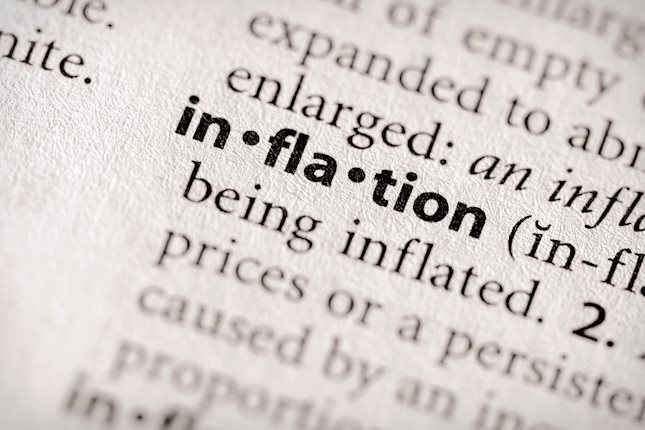- NZD/USD advances strongly to 0.6160 as the US Dollar slumps after US PCE Inflation grew as expected in April.
- Stubbornly elevated US inflation would dent Fed rate-cut bets for September.
- Investors shift focus to US ISM PMI and Employment data.
The NZD/USD pair soars to 0.6160 in Friday’s New York session. The Kiwi asset witnesses significant buying interest as the US Dollar weakens after the United States (US) Personal Consumption Expenditure Price Index (PCE) report for April showed that price pressures grew in-line with estimates.
Monthly and annual headline inflation grew expectedly by 0.3% and 2.7%, respectively. The core PCE inflation, which is Federal Reserve’s (Fed) preferred inflation gauge as it strips off volatile food and energy prices, rose by 0.2%, slower than the estimates and the former release of 0.3% on a month-on-month basis. However, annual core PCE Inflation rose expectedly by 2.8%.
Stubbornly elevated PCE inflation make unlikely for the Fed to start reducing interest rates from the September meeting. The scenario is generally favorable for the US Dollar, however, it is weak due to downwardly revised US Q1 Gross Domestic Product (GDP) data. Revised estimate for Q1 GDP shows that the economy expanded at a slower pace of 1.3% from the preliminary estimate of 1.6%.
The US Dollar Index (DXY), which tracks the Greenback’s value against six major currencies, is down more than 0.3% around 104.40.
Next week, investors will focus on the Manufacturing and the Services PMI, which will be published by the Institute of Supply Management (ISM) and the Nonfarm Payrolls (NFP) for May.
The New Zealand Dollar remains firm even though China’s National Bureau of Statistics (NBS) reported that the Manufacturing and Non-Manufacturing PMI for May missed estimates. In this situation, the New Zealand Dollar faces pressure, being a proxy for China’s economic prospects.
Information on these pages contains forward-looking statements that involve risks and uncertainties. Markets and instruments profiled on this page are for informational purposes only and should not in any way come across as a recommendation to buy or sell in these assets. You should do your own thorough research before making any investment decisions. FXStreet does not in any way guarantee that this information is free from mistakes, errors, or material misstatements. It also does not guarantee that this information is of a timely nature. Investing in Open Markets involves a great deal of risk, including the loss of all or a portion of your investment, as well as emotional distress. All risks, losses and costs associated with investing, including total loss of principal, are your responsibility. The views and opinions expressed in this article are those of the authors and do not necessarily reflect the official policy or position of FXStreet nor its advertisers. The author will not be held responsible for information that is found at the end of links posted on this page.
If not otherwise explicitly mentioned in the body of the article, at the time of writing, the author has no position in any stock mentioned in this article and no business relationship with any company mentioned. The author has not received compensation for writing this article, other than from FXStreet.
FXStreet and the author do not provide personalized recommendations. The author makes no representations as to the accuracy, completeness, or suitability of this information. FXStreet and the author will not be liable for any errors, omissions or any losses, injuries or damages arising from this information and its display or use. Errors and omissions excepted.
The author and FXStreet are not registered investment advisors and nothing in this article is intended to be investment advice.
Recommended content
Editors’ Picks

EUR/USD trades deep in red below 1.0300 after strong US jobs report
EUR/USD stays under bearish pressure and trades below 1.0300 in the American session on Friday. The US Dollar benefits from the upbeat jobs report, which showed an increase of 256,000 in Nonfarm Payrolls, and forces the pair to stay on the back foot heading into the weekend.

GBP/USD drops toward 1.2200 on broad USD demand
GBP/USD extends its weekly slide and trades at its weakest level since November 2023 below 1.2250. The data from the US showed that Nonfarm Payrolls rose by 256,000 in December, fuelling a US Dollar rally and weighing on the pair.

Gold ignores upbeat US data, trades above $2,680
Following a drop toward $2,660 with the immediate reaction to strong US employment data for December, Gold regained its traction and climbed above $2,680. The risk-averse market atmosphere seems to be supporting XAU/USD despite renewed USD strength.

Sui bulls eyes for a new all-time high of $6.35
Sui price recovers most of its weekly losses and trades around $5.06 at the time of writing on Friday. On-chain metrics hint at a rally ahead as SUI’s long-to-short ratio reaches the highest level in over a month, and open interest is also rising.

Think ahead: Mixed inflation data
Core CPI data from the US next week could ease concerns about prolonged elevated inflation while in Central and Eastern Europe, inflation readings look set to remain high.

Best Forex Brokers with Low Spreads
VERIFIED Low spreads are crucial for reducing trading costs. Explore top Forex brokers offering competitive spreads and high leverage. Compare options for EUR/USD, GBP/USD, USD/JPY, and Gold.